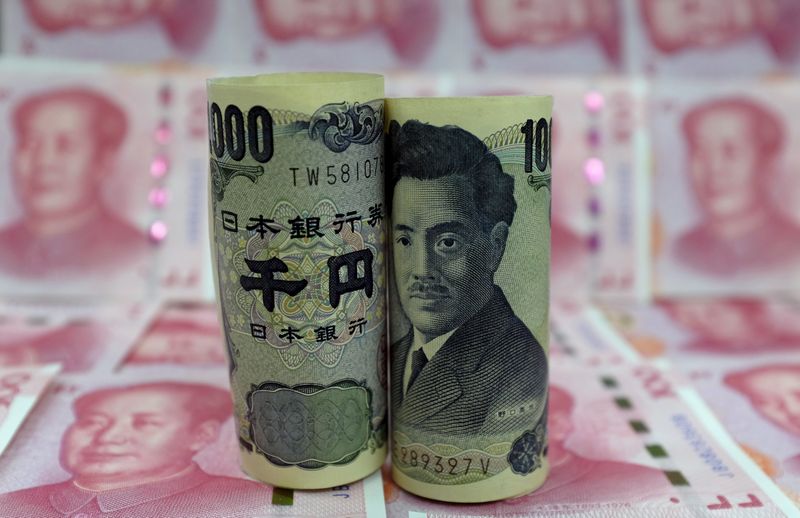By Jamie McGeever
(Reuters) - A look at the day ahead in Asian markets from Jamie McGeever.
Figures from Beijing on Monday showed that China's FX reserves unexpectedly rose in October, but there are unlikely to be similar surprises in Japan's numbers due early on Tuesday.
They will almost certainly show a decline in official reserves, with investors hoping the data sheds light on exactly where Tokyo's record $42.8 billion yen-buying currency market intervention last month came from.
China's official stash rose $23.47 billion last month to $3.052 trillion - analysts had expected a fall to $3.018 trillion - while Japan held $1.24 trillion at the end of September.
China's increase may be down to the euro's rise of almost 1% against the dollar last month. A fairly large chunk of China's FX reserves are thought to be in euro-denominated assets, unlike Japan's, which are overwhelmingly invested in dollar assets.
Japan's Ministry of Finance spent $42.8 billion last month to prop up the yen. This followed almost $20 billion of intervention in September.
China and Japan are the world's top two FX reserves holders, and how they manage their $4 trillion of reserves has huge ripple effects for world markets, especially U.S. Treasuries.
If either or both sell Treasuries outright to support their exchange rates, U.S. yields could spike up, tightening U.S. and global financial conditions. There are already growing concerns surrounding U.S. bond market liquidity without two of the world's largest holders of Treasuries actively selling.
Around 10% of Japan's reserves are held as deposits parked with foreign official institutions and can be readily tapped for dollar-selling intervention. Maybe Tokyo dipped into this pool of funding before directly selling Treasuries.
Japan's reserves fell a record $54 billion in September and in percentage terms, the 4.2% decline was the biggest since 1998. That was in large part due to valuation effects though - some form of dollar asset sales will figure more prominently in October's report.
Three key developments that could provide more direction to markets on Tuesday:
Japan household spending (September)

Australia consumer sentiment (November)
India trade balance (October)